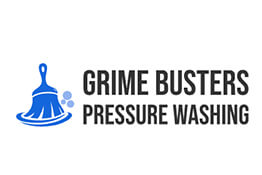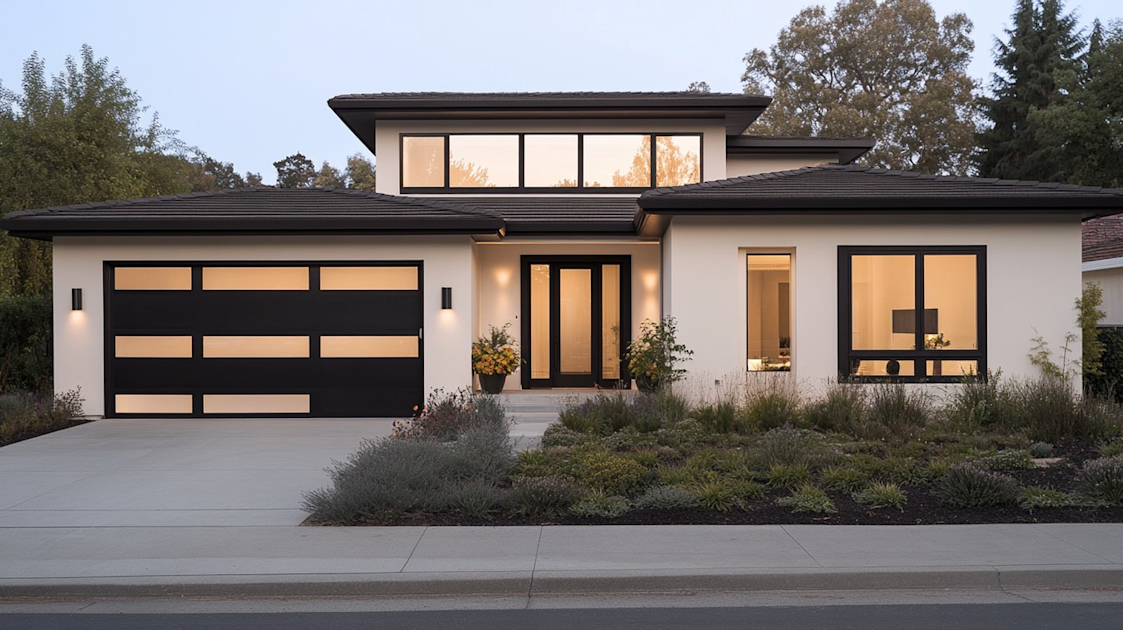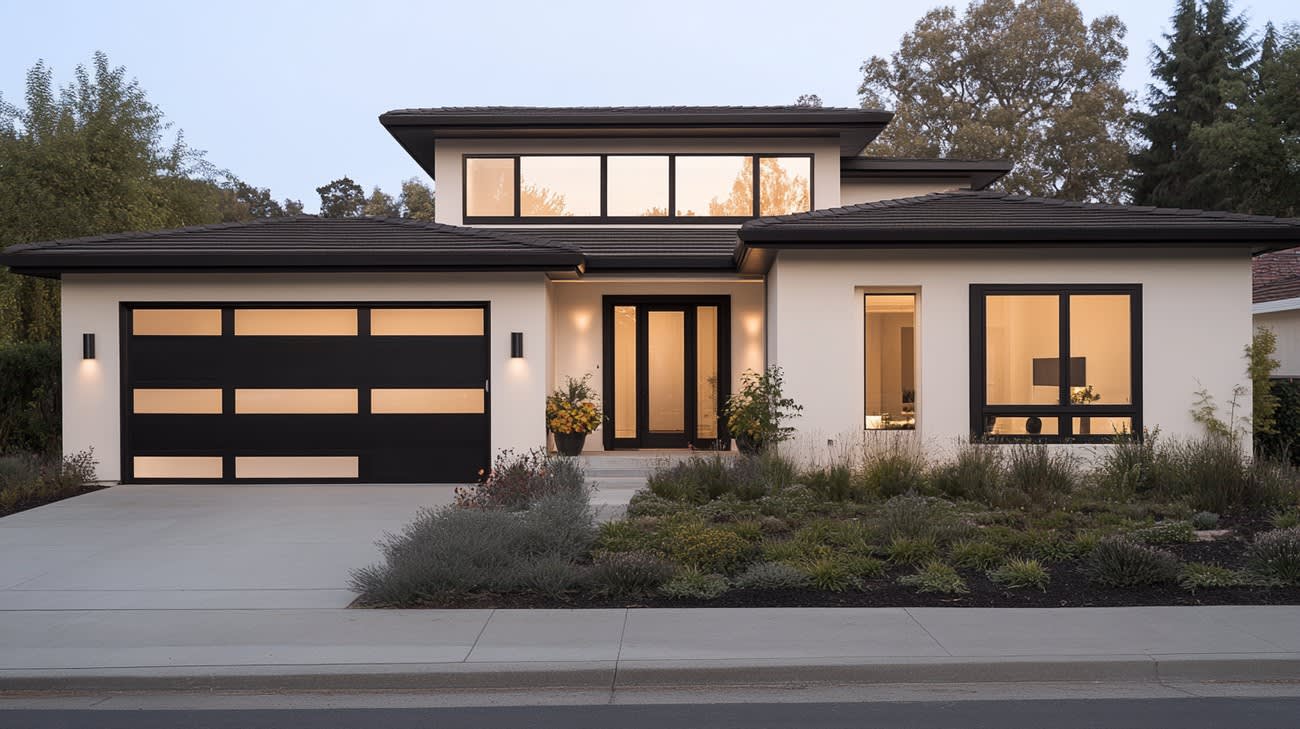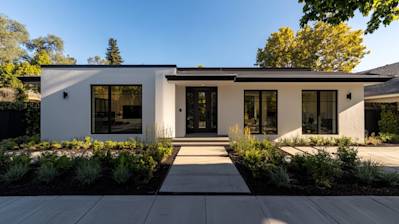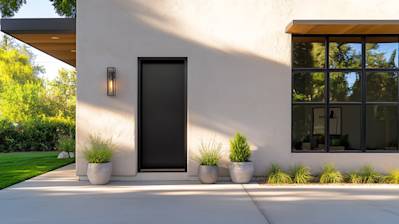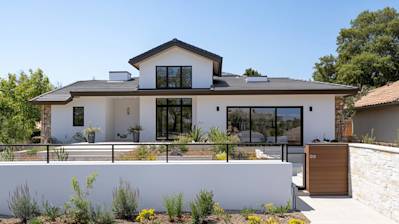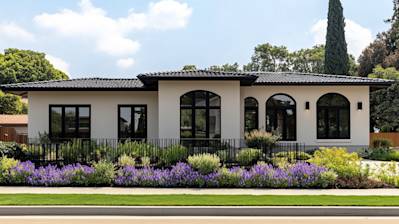Your home's exterior plays a significant role in increasing its aesthetic appeal and value. Among the numerous options available for home exteriors, stucco and siding are popular choices. However, some homeowners may want to switch from traditional stucco to vinyl siding or fiber cement siding for varied reasons. This article offers an all-inclusive guide on siding over stucco for homeowners looking to transform their house's exterior.
How Siding Over Stucco Works
Stucco is a durable and long-lasting material, made from cement, lime, and sand. However, it can crack with time due to various reasons such as foundation shifts, building settlement, or even harsh weather conditions. If you're tired of the constant stucco maintenance, siding might be a perfect solution.
To put siding over stucco, you'll first need to ensure that the stucco surface is flat. This typically requires applying a layer of foam sheathing over the stucco. Next, you could nail the siding directly to the studs in your wall, or fasten it using furring strips.
Materials for Siding Over Stucco
There are several options when it comes to materials for siding over stucco. Here are some of the most common choices:
- Vinyl siding – This is a popular option due to its cost-effectiveness, low maintenance, and variety of color choices.
- Fiber cement siding – Known for its durability, fiber cement siding is resistant to rot and pests.
- Metal siding – Metal siding is highly durable and requires minimal maintenance.
- Wood siding – This traditional option gives homes a classic look but requires more upkeep.
Steps in Installing Siding Over Stucco: A Complete Process
Knowing what the process involves can help homeowners make informed decisions and even potentially turn it into a DIY project. Here's a detailed step-by-step guide:
Inspection: First and foremost, inspect your home's exterior thoroughly. Look for any signs of damage on the stucco that could affect the siding installation.
Measurement: Take accurate measurements of the walls where you plan to install siding. This will help you determine the number of siding panels you'll need.
Prepping the Stucco: You might need to flatten the stucco surface to create a suitable base for the siding. Removing unevenness and protrusions is crucial at this stage.
Foam Sheathing: After prepping the stucco, install a layer of foam sheathing. This action creates a flat, insulating layer between the stucco and siding.
Installing Furring Strips: Affix furring strips on top of the foam sheathing. They help in anchoring the siding properly.
Cutting Panels: Based on measurements, cut your siding panels to the accurate size.
Siding Installation: Starting from the bottom, install the siding panels one row at a time. Ensure each row overlaps the previous one appropriately.
Final Touches: After the installation, give your home exterior a thorough look-over for smoothness, perfect overlap, and proper sealing around windows and doors.
Costs Associated with Siding Over Stucco
This section will discuss the costs that come with this process. The cost of siding over stucco varies widely, depending on factors like your region, the type of siding material you choose, and the size of your home.
You may also have to consider additional factors such as:
- The cost of the siding material per square foot.
- Labor costs if you're hiring professionals to do the job.
- Potential costs for repairing any pre-existing stucco damage.
Remember that while it may seem like a significant investment upfront, new siding can increase your home’s overall value and decrease maintenance costs over time.
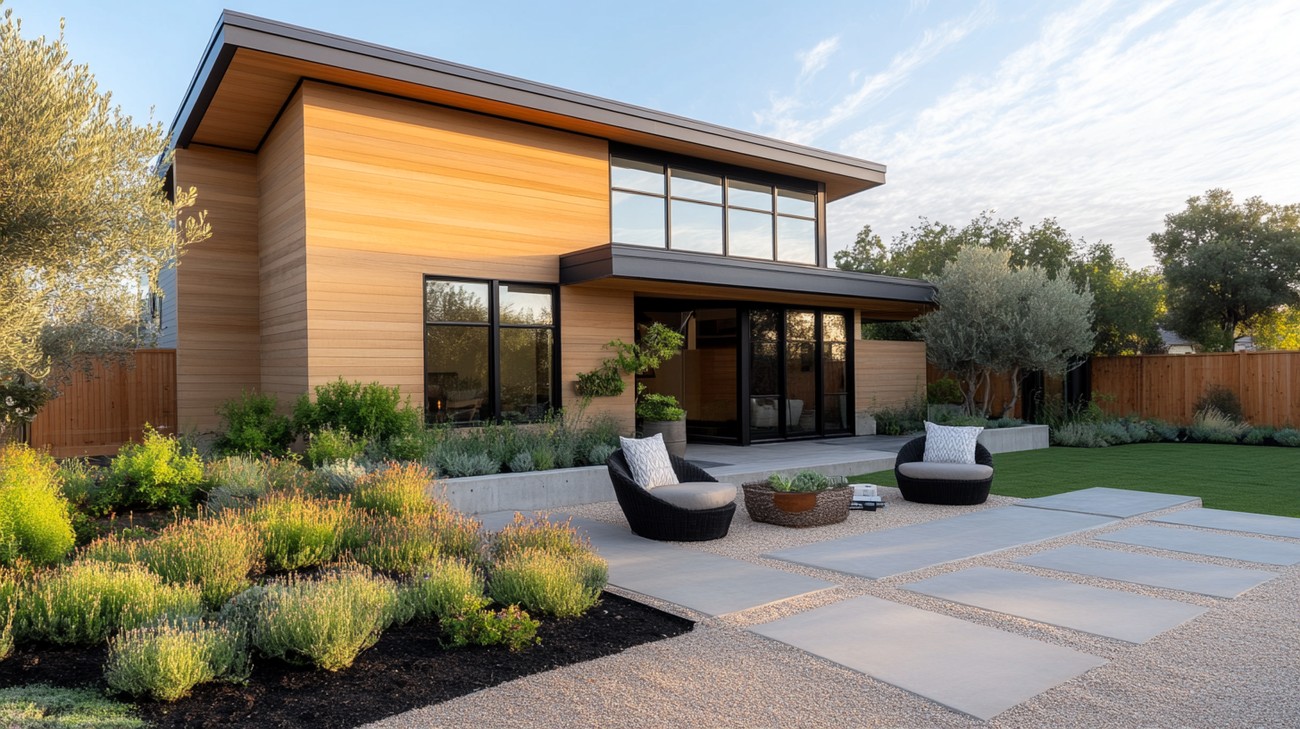
Frequently Asked Questions about Siding Over Stucco
How is siding installed over stucco?
The process of installing siding over stucco starts with a thorough evaluation of the current stucco exterior. The siding installation experts check for any signs of damage that might require repair before installation begins. After this initial phase, a weather-resistant barrier is installed, followed by vertical furring strips to allow suitable space for any potential moisture to escape. Lastly, the siding of choice is installed onto these strips.
What types of siding can be installed over stucco?
There is a wide variety of siding options that can be installed over stucco. Some popular options are vinyl siding, fiber cement siding, metal siding, and wood siding. The choice often depends on the homeowner's aesthetic preference, budget, and the specific requirements of the home.
What precautions should be taken when siding over stucco?
When considering siding over stucco, it's crucial to keep in mind that any existing issues with the stucco must be addressed first. These might include cracks, water damage, or mold. Failing to correct these problems can cause significant damage over time. Getting a professional inspection before starting the project is highly advised.
Can siding over stucco improve energy efficiency?
Yes, siding over stucco can significantly improve your home's energy efficiency. Siding provides an additional layer of insulation, reducing heat loss in winter and keeping your home cooler in summer. This extra layer can lead to substantial savings on utility bills over time.
Do I need a permit to install siding over stucco?
Every city has different regulations concerning home renovations. In many places, you will need a permit for significant changes such as siding over stucco. It's always best to check with your local government office or a knowledgeable contractor to understand the exact permitting requirements for your specific area.
Is siding over stucco a DIY project?
Siding over stucco is a significant task that requires professional knowledge and specific tools. While some experienced DIY enthusiasts may attempt this project, it's generally recommended to hire a professional. Doing so will ensure that the project is completed safely, correctly, and up to code.
How long does it take to side over stucco?
The length of time it takes to side over stucco will depend on various factors including the size of your home, the type of siding you choose, and the specific conditions of your existing stucco. Generally, you can expect the project to take several days to a few weeks.

Pros of Siding Over Stucco
Aesthetic Appeal
Versatility
One of the significant advantages of siding over stucco is aesthetic versatility. Siding comes in a wide range of materials, designs, colors, and finishes that can help homeowners achieve their desired aesthetic. You can choose from vinyl, metal, wood, or fiber cement to match the style and character of your house. Whether you are after a modern, classic, or rustic look, siding can nail it all.
Consistency
When stucco starts to age, it can become inconsistent in texture and color. This can create an uneven or blotched appearance, which can be unappealing. Covering stucco with siding offers a more uniform and consistent look, boosting your home's curb appeal.
Added Insulation
Siding over stucco may come with the added benefit of increased insulation. Many siding materials have excellent insulating properties that can keep your home cooler in summer and warmer in winter. This can lead homeowners to save on energy costs in the long run.
Weather Resistance
Most siding materials offer impressive weather resistance, protecting your home from rain, wind, sun, and snow damage. Some siding materials are even resistant to pests and mold, leading to lower maintenance in the long run.
High Durability
The durability of sidings depends on the material. Yet, most are more durable than stucco, particularly if proper installation and maintenance procedures are followed. Some siding materials, like vinyl and fiber cement, are especially hard-wearing and can last for decades.
Cons of Siding Over Stucco
Higher Upfront Costs
Siding over stucco implies buying new siding material and spending on the installation, which can be costly. Moreover, depending on the condition of your stucco, you may need to pre-treat or repair it before installing the siding, adding to the total cost.
Potential for Moisture Traps
If not correctly installed, siding can potentially create pockets where moisture can accumulate, leading to water damage. This is especially true with stucco since it is a porous material. It's essential to ensure the use of a proper vapor barrier and adequate ventilation to prevent moisture issues.
Difficult to Install
Installing siding over stucco can be tough. Stucco is hard and uneven, making it a challenging surface to work on. Fitting siding onto this surface might demand professional skills and special tools, which can add to the overall cost.
Can Cover Up Existing Issues
While covering old stucco with siding may initially improve a home's appearance, it could mask serious underlying issues like structural damage or mold. Inspect and repair your stucco before installing siding to ensure that no problems will arise in the future.
Limited Scope for Future Changes
Once you install siding over stucco, it can be challenging to revoke your decision without causing substantial damage. If you want to restore your original stucco or try a different exterior in the future, you'll have to go through a complicated and costly process. It's vital to make sure that siding is the right choice for your home before proceeding.
Increased Maintenance
Some siding materials require regular maintenance, such as painting or staining. Plus, although some siding types are resistant to pests and mold, others may require periodic treatments to remain in prime condition. While stucco requires maintenance too, it typically demands less frequent care. Thus, siding could potentially mean increased maintenance work in the long run.

Myths and Misconceptions about Siding Over Stucco
When considering a home renovation, one of the decisions homeowners are faced with is whether to place siding over existing stucco. There's a multitude of opinions surrounding this topic, leading to a good number of myths and misconceptions which can hinder or misguide homeowners in making the best decision for their property.
Myth 1: Siding Can't Be Installed Over Stucco
It's a widespread belief among some homeowners that siding can't be installed over stucco, but this is a myth. In fact, quite the opposite is true. While it may not be the easiest of tasks and there are certainly a few challenges to face, it's definitely possible to install siding over stucco. Doing so could actually provide an extra layer of insulation to your home, enhancing its energy efficiency.
Myth 2: Stucco Must Be Removed Before Installing Siding
Another common misconception related to installing siding over stucco is the idea that the stucco must be removed before the installation process. While this can be an option and might be recommended by some professionals based on circumstances like poor stucco condition or a desire for a completely fresh start, it's not a requirement. Again, having that extra layer of stucco under the siding can add an additional level of insulation.
Myth 2.1: Stucco Removal is Always Easy
To further elaborate on this, some homeowners believe that stucco removal is a quick and easy process. However, this is often not the case. The stucco removal process can be quite labor-intensive and time-consuming. If not properly conducted, it can also damage the underlying sheathing. Therefore, homeowners should carefully consider the pros and cons before opting for stucco removal.
Myth 3: Siding Over Stucco Results in Poor Aesthetics
Another common misconception is that siding over stucco leads to unappealing aesthetics due to a bumpy or uneven final look. This is generally untrue, as special measures are taken during installation to ensure a smooth, clean finish. This typically involves using certain materials like foam sheathing which are specifically designed to create a flat and uniform surface over the stucco.
Myth 4: Siding Over Stucco Will Cause Structural Damage
The belief that siding over stucco will cause harm to a house's structure is another incorrect assumption. If not installed correctly, any type of siding can cause damage, regardless of whether it's installed over stucco, brick, or any other surface. It's crucial, therefore, to ensure the installation is performed correctly, ideally by an experienced professional.
Myth 4.1: Siding Over Stucco Leads to Moisture Problems
Building on the previous myth, some people believe that siding over stucco specifically causes more moisture problems. In reality, moisture problems are typically linked to improper installation or the lack of an adequate water-resistive barrier, rather than directly resulting from siding over stucco.
Myth 5: Siding Over Stucco Costs More Than New Stucco
Cost-related myths are also common in the world of siding over stucco, with people believing this method will always be more costly. While costs depend on a wide range of factors, including labor rates, material costs, and the specifics of the project, siding over stucco doesn't inherently cost more than reapplying stucco. It's advisable to seek quotes and weigh options before making a decision based on assumed costs.
Myth 6: There's Only One Option When Siding Over Stucco
Many homeowners fall prey to the misconception that there's only one siding option when it comes to siding over stucco. In reality, there's a wide variety of options for exterior finishes that can be applied over stucco including vinyl, wood, metal, and composite siding options, all providing different aesthetic and functional benefits.
Busting these myths can help homeowners make an informed decision when it comes to siding over stucco. It’s crucial to remember that each house is unique, implying that the approach for one house may not work perfectly for another. Therefore, homeowners should always consult with a qualified professional before undertaking any major home renovation project.
Summary
So, if you're looking to revamp your home exterior, consider the idea of siding over stucco. It's definitely a practical and aesthetic option. Remember you're not only improving the way your house looks, but essentially adding another layer of insulation, which can really help with energy efficiency and noise reduction. Plus, with the wide range of color and style options available, you can truly personalize your home's façade.
However, siding over stucco is a job that requires professional expertise. It's important to ensure a proper installation process to maximize the siding’s lifespan and prevent potential issues such as moisture buildup and structural damage. If done right, this is a great investment that can increase your property's market value.
Finally, while siding over stucco requires an upfront investment, the benefits you get in the long term help balance out the cost. With low maintenance requirements, increased energy saving, and a better curb appeal, siding over stucco is an excellent option to consider when you're looking to enhance your home's exterior and improve your living conditions. It's all about making informed decisions and considering what suits your needs and budget best.
About Atlas Stucco
At Atlas Stucco, based in the vibrant city of Sacramento, CA, we specialize in creating visually stunning, durable, and quality stucco for both residential and commercial properties. Our team of dedicated professionals brings years of experience, exceptional craftsmanship, and a profound love for stucco to each project we undertake. At Atlas, we prioritize customer satisfaction above anything else and aim to turn your visualizations into reality, with expert guidance provided every step of the way. We're not only enhancing the aesthetics of your property; we're building relationships and transforming dreams into reality!
Tags: siding, stucco, exterior renovation,
